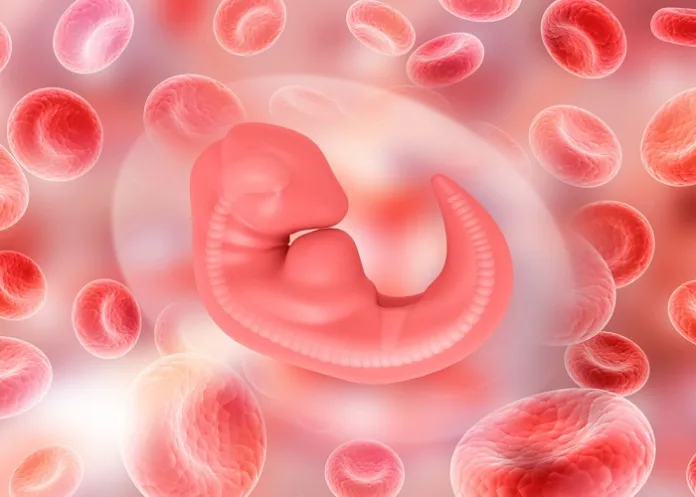While there appears to be some public support for calls by leading British scientists to double the current 14-day limit on embryo research to 28 days, which they say could provide scientific breakthroughs for infertility, miscarriage and birth defects, there has also been a wave of resistance from other quarters.
Newly published fieldwork with 70 people, designed to hear diverse public views on the highly controversial topic, suggests the mood is favourable among some for the relaxing of the existing ban.
Part-funded by the government’s independent UK Research and Innovation body along with the Wellcome Trust, the £100 000 project ran from May to July, asking probing ethical and philosophical questions about the idea of stretching the limit.
The group behind the work – the Human Developmental Biology Initiative (HDBI) – said it was an important first step in a much longer debate that would inevitably be needed if the legal rules around embryo experiments were changed.
However, reports BBC News, organisations like Right To Life UK and some religious groups strongly oppose medical experiments on human embryos.
Right To Life UK spokesperson Catherine Robinson said human embryos “should never be experimented on” and accused the project of being a thinly veiled attempt to lobby for the removal of the 14-day limit – something the HDBI denies.
It says the aim is to better understand public hopes and concerns around the regulation of research involving human embryos.
Unstoppable science?
Professor Robin Lovell-Badge, HDBI Oversight group co-chair, senior group leader and head of the Laboratory of Stem Cell Biology and Developmental Genetics at the Francis Crick Institute, said: “When we think about ‘are we able to change the law?’ we have to be very careful. It’s been this contract between society and researchers for a long time.
“The government will not do anything without public support… and this exercise suggests there might be (support).”
He said no one was suggesting growing the embryos to make babies. Instead, it’s about examining the earliest days and developmental processes of new life, he told BBC News.
The 14-day limit in the UK’s Human Fertilisation and Embryology Act, dating back to 1990, was “always an arbitrary limit” or acceptable cut-off.
At the time there was a boom in lab studies into fertility treatments and early embryo development. Observing what happens can help understanding of what can go wrong.
The science has progressed considerably since then, pushing the boundary of how long a developing embryo could be viably kept alive in a dish for research purposes after fertilisation, if that were to be legally allowed.
Ethical red lines
Some argue the 14‐day rule was never meant to represent a firm moral boundary for embryo research, just a practical time limit. Precisely what happens after 14 days is somewhat of a mystery, because the research has not been allowed.
It was proposed by the Warnock Committee in 1984, not long after the birth of Louise Brown, the world’s first IVF baby in 1978.
The 14-day threshold is reached when a physical milestone happens and something called the “primitive streak” appears as the 1mm-long embryo organises itself from a ball of cells into something with a definite top, bottom, front and back.
After that, more complex structures start to form.
Experts know from other work with animals and scans of pregnant women that by four weeks or 28 days, the heart forms and starts beating.
At that point, the embryo is still smaller than a grain of rice and has no functioning central nervous system to feel pain, they say.
Experts argue that extending the window for embryo research to 28 days would allow scientists to closely study vital developmental processes that occur during something called gastrulation – when the main tissue building blocks are established.
Dr Peter Rugg-Gunn, who is scientific lead for the HDBI, explained: “We know very little after two weeks. Two to five weeks is black box.”
He said learning more about this stage could lead to improvements in IVF success rates and spina bifida research.
“The IVF success rate is one in four. Often, it fails after the second week of development. We know very little about what contributes to that failure currently.”
An important early structure in the embryo, called the neural tube that goes on to form the brain and spine, closes at around four weeks. When this process fails, babies can have something called a neural tube defect, which includes spina bifida where, in the severest form, the spine is exposed and can be damaged.
Observing this closure could also be a way to date research embryos approaching 28 days in the lab that should then be destroyed, if the new cut-off limit were agreed, scientists say.
The people who took part in the HDBI fieldwork were also asked their opinions about scientists developing synthetic embryos – ones created from stem cells, not egg and sperm.
Some ethically opposed all forms of human embryo research. Some called for case-by-case permission.
The UK is currently debating how to regulate this type of pioneering work. Legal and ethical experts in the country are drawing up a voluntary set of guidelines expected to be published before the end of the year.
In the UK there are laws to prevent synthetic embryos being used to create babies.
Researchers elsewhere are already testing different human-hybrid embryo models in animals.
HDBI article – Public dialogue on early human embryo research (Open access)
BBC article – Scientists: Allow forbidden 28-day embryo experiments (Open access)
See more from MedicalBrief archives:
Scientists grow human embryo model without sperm or egg
Biotech company plans to create embryos for organ harvesting

